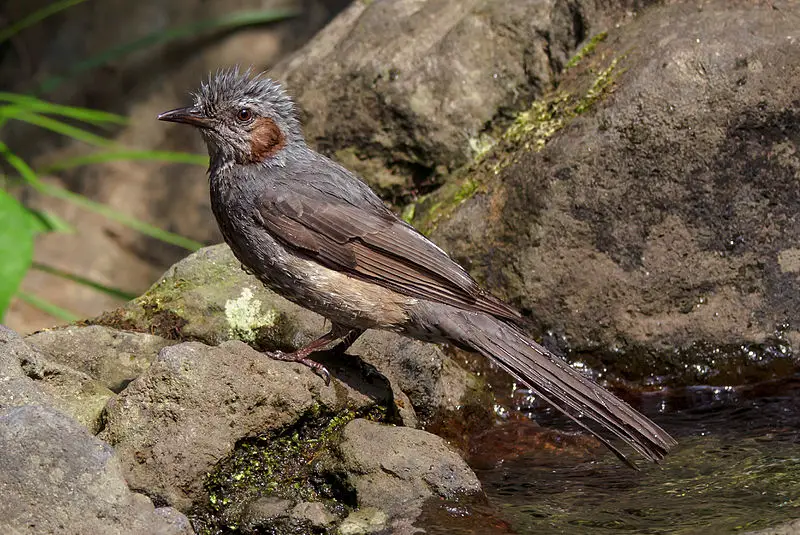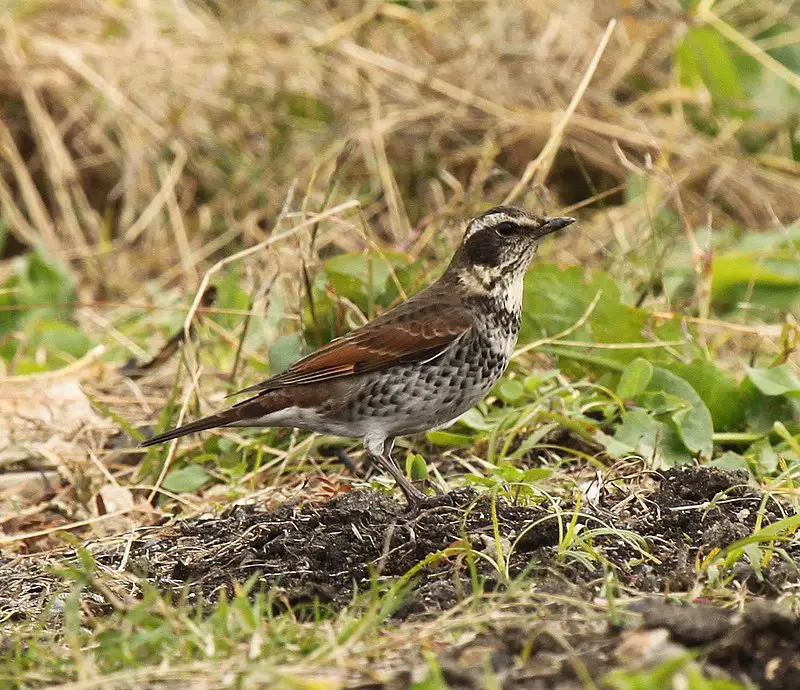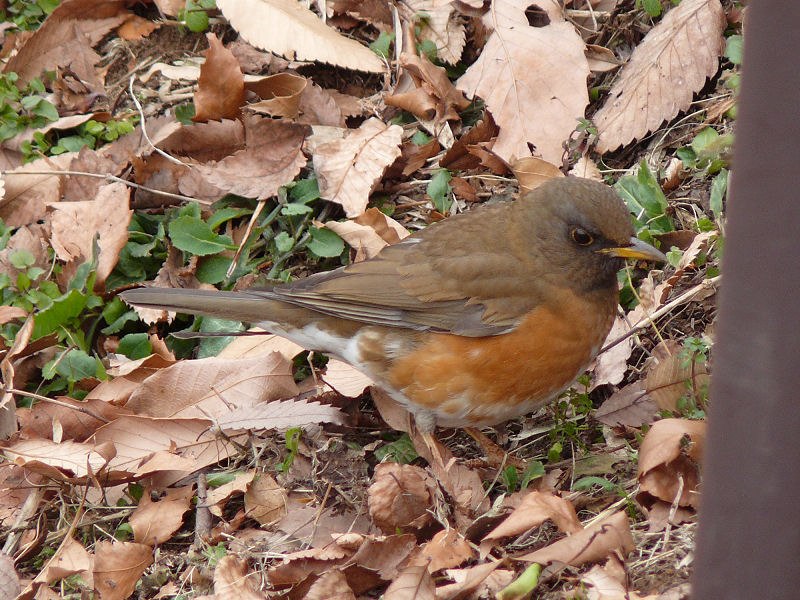Sapporo, the capital city of Hokkaido, Japan, is a vibrant urban landscape surrounded by beautiful natural scenery. The region is known for its diverse flora and fauna, and has been a favorite destination for birdwatchers for many years.
The local habitat supports a rich variety of bird species throughout the year, ranging from small and colorful songbirds, to large predatory species. Hokkaido’s natural environment is the perfect place for birdwatching, and the city of Sapporo is no exception.
In this article, we will feature some of the most beautiful and fascinating birds that you can observe in Sapporo, Hokkaido.
1. Japanese Pygmy Woodpecker

The Japanese pygmy woodpecker (Yungipicus kizuki) is a small species of woodpecker found in forests in Russia, China, Korea and Japan. It was first described by Temminck back in the 1800s.
This bird generally lives within coniferous or deciduous trees and primarily feeds on insects like ants that it finds under bark or on dead branches.
Its plumage consists mainly of black wings with white patches along its shoulder as well as an orange-red crown to differentiate males from females which lack this trait.
The International Union for Conservation of Nature has assessed this species as least concern due to their wide range across several countries.
They are quite common though rarely seen outside heavily forested areas due to their size and natural shyness around peopleScientific classification:
| Kingdom | Animalia |
| Phylum | Chordata |
| Class | Aves |
| Order | Piciformes |
| Family | Picidae |
| Genus | Yungipicus |
| Species | Y. kizuki |
Also Featured In: Common Birds in Japan, Tokyo Birds You Need to Know
2. Brown-Eared Bulbul

The Brown-eared Bulbul is a medium-sized bird native to eastern Asia. Its range stretches from southern Sakhalin to the northern Philippines, and it can be found in abundance throughout its habitat.
The species was initially classified as part of the Turdus genus before being reclassified into other genera over time – most recently Microscelis.
These birds are characterized by their unique brown ear tufts, which have earned them their common name.
They typically measure around 20 cm long with greyish olive colored feathers covering much of their body except for white underparts and wings marked with black bars on each feather.
Their diet consists mainly of insects but they also feed on fruits such as berries when available in addition to some small invertebrates like beetles or caterpillars.
With an impressive vocal range that includes both calls and songs, these birds make great additions to any garden or aviary.Scientific classification:
| Kingdom | Animalia |
| Phylum | Chordata |
| Class | Aves |
| Order | Passeriformes |
| Family | Pycnonotidae |
| Genus | Hypsipetes |
| Species | H. amaurotis |
Also Featured In: Most Common Fukuoka Birds, Birds Commonly Found in Kyoto
3. Coal Tit

The Coal Tit, also known as the Cole Tit is a small passerine bird belonging to the Paridae family. It has an extensive range, from temperate and subtropical areas in Europe all the way to North Africa.
First described by Carl Linnaeus in Systema Natura back 1758, it’s now commonly grouped with its cousin – The Black-Crested Tit.
This species thrives best when living near forests or other wooded habitats that provide them with plenty of food sources like insects and seeds.
They are considered quite common throughout their range due to their adaptability and resilience which makes them well suited for urban environments too.Scientific classification:
| Kingdom | Animalia |
| Phylum | Chordata |
| Class | Aves |
| Order | Passeriformes |
| Family | Paridae |
| Genus | Periparus |
| Species | P. ater |
Also Featured In: Birds of United Kingdom, Autumn Birds You Should Know
4. Hawfinch

The Hawfinch is a stunning passerine bird of the finch family. It lives in Europe, North Africa, and parts of Asia and stands out for its large size amongst other members of its family.
Its most recognizable feature is its bulky bill which it uses to crack open hard nuts like hazelnuts and cherry stones.
The male has bright pinkish-red underparts while the female’s are more dull browns or greys.
Both sexes also have distinctive black wings with white patches towards their tips. Their closest living relatives are found across East Asia as well as some species in both North America and Canada.
These smart birds often gather together in small flocks during wintertime when food sources become scarce making them much easier to spot.Scientific classification:
| Kingdom | Animalia |
| Phylum | Chordata |
| Class | Aves |
| Order | Passeriformes |
| Family | Fringillidae |
| Subfamily | Carduelinae |
| Genus | Coccothraustes Brisson, 1760 |
| Species | C. coccothraustes |
Also Featured In: Most common Birds in France, Common Slovakian Birds
5. Eyebrowed Thrush

The Eyebrowed Thrush is a beautiful species of bird belonging to the Turdidae family. With its distinctive eyebrows, this thrush can be found in dense coniferous forests and taiga regions from Siberia eastwards towards Japan.
It undertakes long migrations during winter when it heads south to China and Southeast Asia as far down as India.
While not common, there have been rare sightings of these birds in western Europe too. This songbird builds nests high up on trees where they lay 4-6 eggs each time.
These shy birds are beautifully patterned with shades ranging from greyish browns to blackish blues all over their bodies making them stand out against the darker hues of nature’s lush green backgrounds.Scientific classification:
| Kingdom | Animalia |
| Phylum | Chordata |
| Class | Aves |
| Order | Passeriformes |
| Family | Turdidae |
| Genus | Turdus |
| Species | T. obscurus |
Also Featured In: Maldives birds, Birds that You’ll Find in Kolkata
6. Dusky Thrush

The Dusky Thrush is a beautiful bird belonging to the thrush family. It can be found in parts of Central Siberia, Kamchatka, Japan, South China and Myanmar.
Its scientific name comes from Latin Turdus meaning ‘thrush’ and Ancient Greek eunomos which translates to ‘orderly’ – an apt description for its neat appearance.
These birds are closely related to Naumann’s thrushes and were once considered the same species.
They have dark grey feathers with white spots on their wings as well as a creamy-white stripe above each eye that contrasts beautifully against their heads’ darker plumage colouring.
The dusky thrush has been known to inhabit gardens during winter months where it feeds mainly upon fruits such as berries or other small invertebrates like insects or worms; this makes them popular garden visitors.Scientific classification:
| Kingdom | Animalia |
| Phylum | Chordata |
| Class | Aves |
| Order | Passeriformes |
| Family | Turdidae |
| Genus | Turdus |
| Species | T. eunomus |
Also Featured In: Thrush Species,
7. Brown-Headed Thrush

The Brown-headed Thrush is a species of bird belonging to the Turdidae family. It can be found breeding in Sakhalin, the Kuril Islands and Japan and during winter season it migrates towards Ryukyu islands, Taiwan, Hainan and northern Philippines.
Its natural habitat consists of temperate forests. This majestic bird has brown head with grayish white underside while its wings are black with some patches of white on them.
It also possesses yellow eyes which give it an attractive look overall.Scientific classification:
| Kingdom | Animalia |
| Phylum | Chordata |
| Class | Aves |
| Order | Passeriformes |
| Family | Turdidae |
| Genus | Turdus |
| Species | T. chrysolaus |
8. Olive-Backed Pipit

The Olive-backed Pipit is a tiny bird belonging to the Pipit genus that breeds in southern, north central and eastern Asia, as well as northeastern European Russia.
It migrates long distances during winters, flying to southern Asia and Indonesia. Often called Indian Pipit, Hodgson’s Pipit, or Tree Pipit, it resembles the latter in appearance.
This species is popularly known for its olive-green back and streaked chest. The Olive-backed Pipit makes its nests in grassy areas or bushes, and lays 2-6 eggs at a time. It feeds on insects, seeds, and small invertebrates.
Due to habitat loss and degradation, this species is listed as a “Least Concern” by the International Union for Conservation of Nature.Scientific classification:
| Kingdom | Animalia |
| Phylum | Chordata |
| Class | Aves |
| Order | Passeriformes |
| Family | Motacillidae |
| Genus | Anthus |
| Species | A. hodgsoni |
Also Featured In: Asian Birds,
9. Asian Brown Flycatcher

The Asian brown flycatcher is a small bird belonging to the flycatcher family Muscicapidae. Its name comes from the Latin words for “fly” and “catch.” This bird is found in Japan, eastern Siberia, and the Himalayas, and feeds primarily on insects.
Its scientific name, Muscicapa dauurica, refers to the Dauria region of south-eastern Siberia where it is found.
Known for its distinctive brown coloring, this bird is a favorite of birdwatchers and nature enthusiasts.
Despite its small size, the Asian brown flycatcher is an important part of the ecosystem, helping to control insect populations and contributing to biodiversity.Scientific classification:
| Kingdom | Animalia |
| Phylum | Chordata |
| Class | Aves |
| Order | Passeriformes |
| Family | Muscicapidae |
| Genus | Muscicapa |
| Species | M. dauurica |
Also Featured In: Hong Kong Birds You Need to See, Birds that Migrate to Sri Lankan
10. Brown Dipper

The Brown dipper bird is a songbird commonly found in the mountains of the east Palearctic. With its chocolate-brown plumage, it resembles a thrush and has a slightly lighter coloured back and breast.
This species is also known as Pallas’s dipper, Asian dipper, or Asiatic dipper. It has a cocked tail and is considered the largest of the dippers, measuring around 22 cm and weighing 87 g. Despite its size, this bird is an adept swimmer and is well equipped for aquatic life.
The Brown dipper’s natural habitat includes mountain streams and fast-flowing rivers. It is an aviary marvel to behold when navigating and diving along the water’s surface.Scientific classification:
| Kingdom | Animalia |
| Phylum | Chordata |
| Class | Aves |
| Order | Passeriformes |
| Family | Cinclidae |
| Genus | Cinclus |
| Species | C. pallasii |
Also Featured In: Birds of Ladakh, Yakushima Island Birds You Should Know
11. Eastern Buzzard

The eastern buzzard, also called the Japanese buzzard, is a medium to large bird of prey. It is sometimes considered a subspecies of the common buzzard, but some scientists argue it is a distinct species.
The bird is native to Mongolia, China, Japan, and some offshore islands. Its appearance is similar to other buzzards, with brown feathers and a hooked beak.
The eastern buzzard is known to be a skilled hunter, feeding on small mammals, birds, and reptiles.
It can often be seen soaring high in the sky, searching for prey. Its habitat consists of open fields, woodlands, and mountainous regions.
Despite its name, the eastern buzzard isn’t only found in the east. Its range also extends to parts of Russia, Korea, and Taiwan.Scientific classification:
| Kingdom | Animalia |
| Phylum | Chordata |
| Class | Aves |
| Order | Accipitriformes |
| Family | Accipitridae |
| Genus | Buteo |
| Species | B. japonicus |
12. Japanese Sparrowhawk

The Japanese sparrowhawk is a small bird of prey with a length ranging from 23-30 cm. The female is typically larger than the male. It belongs to the Accipitridae family which includes other raptors like eagles, buzzards, and harriers.
This bird is found in open and wooded areas and breeds in China, Japan, Korea, and Siberia. During winters, it migrates to Indonesia and the Philippines, passing through other South-east Asian countries.Scientific classification:
| Kingdom | Animalia |
| Phylum | Chordata |
| Class | Aves |
| Order | Accipitriformes |
| Family | Accipitridae |
| Genus | Accipiter |
| Species | A. gularis |
13. Blue-And-White Flycatcher

The Blue-and-white flycatcher, also known as the Japanese flycatcher, is a migratory songbird found in the Old World flycatcher family.
It breeds in areas such as Japan, Korea, northeastern China, and the Russian Far East.
During winters, they can be found in Southeast Asia, primarily in countries like Vietnam, Cambodia, Thailand, and on the islands of Sumatra and Borneo.
This species is highly observed due to its charismatic blue and white plumage, and they can often be found in diverse habitats such as forests, parks, and gardens.
It is a small bird with a distinctive tail that helps them to catch insects while perched or in flight.
These birds are highly vocal and can be heard singing their melodious songs high up in the trees.Scientific classification:
| Kingdom | Animalia |
| Phylum | Chordata |
| Class | Aves |
| Order | Passeriformes |
| Family | Muscicapidae |
| Genus | Cyanoptila |
| Species | C. cyanomelana |
Also Featured In: Most Common Birds Live in Osaka, Birds of Kobe
14. Russet Sparrow

The russet sparrow, also known as the cinnamon or cinnamon tree sparrow, is a small bird belonging to the sparrow family. It has a thick bill and typically feeds on seeds.
This bird measures around 14 to 15 cm long with a warm rufous plumage above and grayish plumage below.
This species exhibits sexual dimorphism, with both males and females having similar plumage patterns.
The russet sparrow is found in various parts of Asia, including Japan, China, and Korea. This bird is often observed in agricultural areas, gardens, and parks.
Overall, the russet sparrow is a cute and chubby bird that can be identified by its unique coloration and thick beak.Scientific classification:
| Kingdom | Animalia |
| Phylum | Chordata |
| Class | Aves |
| Order | Passeriformes |
| Family | Passeridae |
| Genus | Passer |
| Species | P. cinnamomeus |
Also Featured In: Most Common Birds of Sakhalin,
15. Latham’s Snipe

Latham’s snipe, also called the Japanese snipe, is a migratory bird found in the East Asian-Australasian Flyway. This medium-sized bird has a long bill that distinguishes it from other species.
The snipe’s plumage is a combination of black, brown, buff, and white, giving it a cryptic pattern. The bird is about 29-33 cm long, with a wingspan of 50-54 cm, and weighs between 150-230 g.
Despite being identifiable as a Gallinago snipe, it is challenging to distinguish it from Swinhoe’s snipe.
As a migratory species, the Latham’s snipe travels to different regions to breed and feed.
The breeding area is located in East Asia, while the non-breeding place is found in Southeast Asia and Australia. This bird species relies mainly on wetland habitats to thrive and survive.Scientific classification:
| Kingdom | Animalia |
| Phylum | Chordata |
| Class | Aves |
| Order | Charadriiformes |
| Family | Scolopacidae |
| Genus | Gallinago |
| Species | G. hardwickii |
Also Featured In: Birds You’ll Find in Hokkaido, Native Birds Of Mackay
16. Yellow-Throated Bunting

The Yellow-throated bunting, or elegant bunting, is a bird species belonging to the Emberizidae family.
It is distributed across temperate and subtropical forests in China, Japan, Korea, Myanmar, Russia, and Taiwan.
The bird generally follows Type II chain migration pattern. The bird’s feather isotope studies reveal that the northern population breeds and winters distinctively from their southern counterparts.
The delicate and beautiful yellow throat sets the Yellow-throated bunting apart, making it easily identifiable.
Its natural habitat is in forests, and the species is mostly seen in dry forests.
Overall, the Yellow-throated bunting is an attractive bird found in a range of beautiful locations in eastern Asia.Scientific classification:
| Kingdom | Animalia |
| Phylum | Chordata |
| Class | Aves |
| Order | Passeriformes |
| Family | Emberizidae |
| Genus | Emberiza |
| Species | E. elegans |
17. Black-Browed Reed Warbler

The black-browed reed warbler is a type of marsh-warbler in the Acrocephalidae family. It was previously classified as part of the “Old World warbler” group.
This bird species was first noted by Robert Swinhoe in 1860. It breeds in areas ranging from eastern Mongolia and southeastern Russia to eastern China and Japan.
During the colder months, it can be found in Southeast Asia. The black-browed reed warbler closely resembles other similar species.Scientific classification:
| Kingdom | Animalia |
| Phylum | Chordata |
| Class | Aves |
| Order | Passeriformes |
| Family | Acrocephalidae |
| Genus | Acrocephalus |
| Species | A. bistrigiceps |
18. Narcissus Flycatcher

The Narcissus flycatcher is a migratory passerine bird that belongs to the Old World flycatcher family. Found in the East Palearctic region, it covers a vast range from Sakhalin in the north to Borneo and the Philippines in southeast Asia.
This bird has distinct breeding plumage with a blue-grey head and back, black wings with white markings, and a bright orange throat and breast. During migration, males and females molt into a duller plumage.
The Narcissus flycatcher feeds on insects, which it catches by flying out from tree perches and returning to the same spot.
This bird is known to be highly migratory, and occasionally, it can also be found as a vagrant in Australia.Scientific classification:
| Kingdom | Animalia |
| Phylum | Chordata |
| Class | Aves |
| Order | Passeriformes |
| Family | Muscicapidae |
| Genus | Ficedula |
| Species | F. narcissina |